Do you also have water on the roof terrace after raining in undesirable places?
We explain the reasons why water on the roof terrace remains. 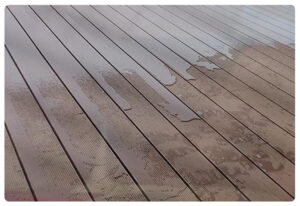
In this article you will learn:
- Why can the water on the roof surface of the rooftop terrace persist for a long time
- What can residual water on the terrace lead to?
- How to deal with this problem
If you are concerned about the residual water on the roof top terrace, be sure to read this article. We will explain everything from scratch.
To start with, the terraces are divided into two basic divisions:
- traditional terrace (wooden or composite on joists or made of tiles glued to the terrace base).
- ventilated terrace (wooden or composite on joists or made of ceramic tiles 2 cm on support pads or adjustable pedestals).
If your terrace is installed using the traditional method, that is:
- in the case of a terrace made of wooden or composite boards (boards screwed to the joists of the substructure and those based directly on the ground)
- and in the case of terraces / balconies made of ceramic tiles permanently glued to the substrate with mounting adhesive
If it is the fault of the unevenness of the ground, it is no wonder that the water in the roof top terrace areas. It is not dependent on the top cladding. The fault is in the floor. And it is from its alignment that repairs should begin.
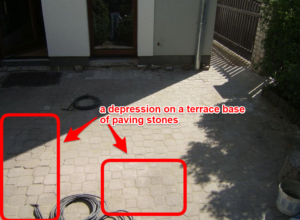
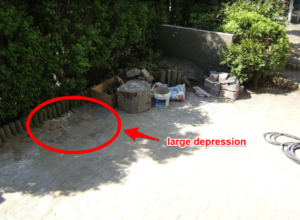
If the terrace base has been properly prepared and the edges of the tiles are bent upwards or the boards are boat-like, the fault is on their side.
The cladding needs to be changed. This will solve our problem.
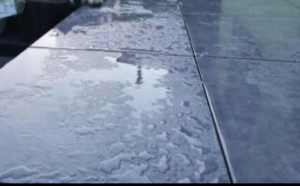
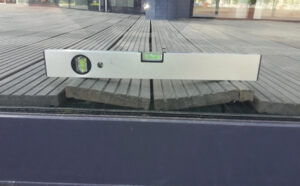
 Third, remember that each material has its own strength.
Third, remember that each material has its own strength.
The strength of a component is a numerical value for the weight of pressure that the material can withstand until it fails. The strength value is always provided by the manufacturer.
Often, the lack of knowledge of the value of the maximum weight that can be set on our deck’s finishing surface causes damage to it.
The ceramic tiles break and the boards bend. Often even irreversible damage that necessitates replacement with new ones.

The above examples where water is kept on the roof terrace also apply to ventilated terraces. Those placed on adjustable or support pads.
However, in this case, there are a few additional points to note:
When leveling terrace tiles or composite boards with the use of adjustable pedestals, it is important to meet all the parameters that determine the correct leveling of the installed terrace surface
And here:
Fourthly, the most important thing is to choose the right type of adjustable pedestals for the planned loads.
When it comes to the terrace development plans, we probably already have the final arrangement in mind.
If we know where we want to place heavy pots, grill or even a pool. It is good to strengthen these places.
Reinforcements are made by additional positioning of the adjustable pedestals. In this way, we will make another adjustable pedestal for the wooden or composite boards or ceramic tiles. And thus strengthen their strength.
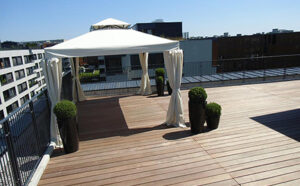
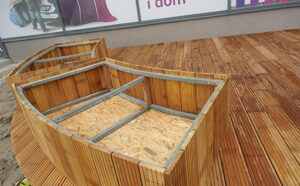
The fifth and last important point to pay attention to.
The one that causes the water on the roof terrace to remain in inappropriate places are all the side elements of the structure
Regarding point 5 for water on the roof terrace and all other terraces, we are talking here about:
- rubber pads under the adjustable pedestals, e.g. made of SBR rubber pads
- tape securing the joist
- using the correct gap spacer when installing terrace tiles
- using an adapter to screw the joists to the adjustable pedestals
- whether to level the tiles of each tiles separately and with respect to each other.
Maintaining all technical parameters of adjustable plinths will ensure the correct levelling of each terrace surface. And a balcony. Also, there is no stagnation of water on tiles, boards or terrace ceramic tiles. Of course, everything is in accordance with the montage instructions.





Leave A Comment
You must be logged in to post a comment.